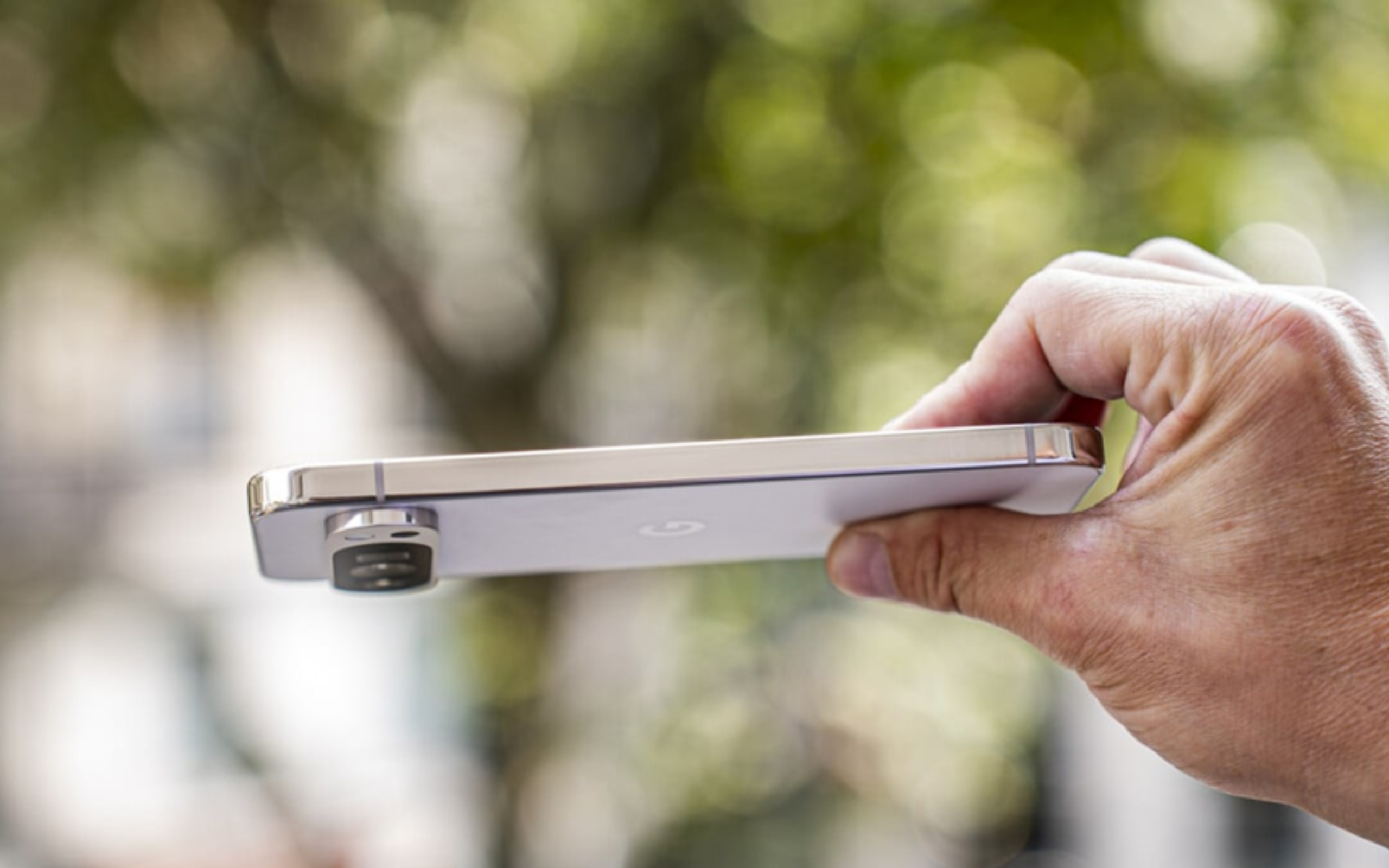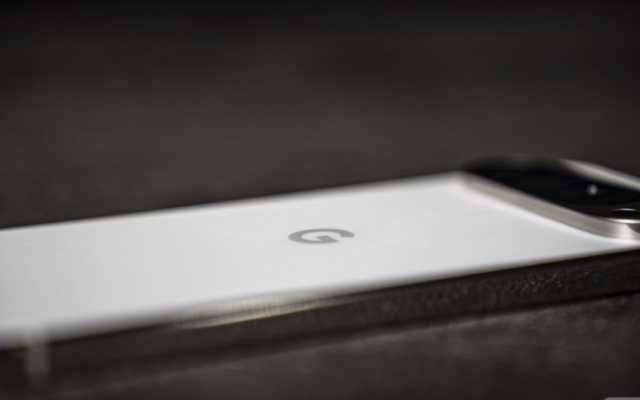The Google Pixel 9 Pro XL takes over from the Pixel 8 Pro, carrying forward its predecessor’s philosophy with a new design and a hefty dose of AI. However, not all features are available to everyone.
Pros of the Google Pixel 9 Pro XL:
- A modern, sleek design
- A very bright display
- Excellent camera performance
- Improved battery life
- Impeccable software support
Cons of the Google Pixel 9 Pro XL:
- Disappointing performance
- Limited system-on-chip (SoC)
- Many AI features missing in France
- Increasingly expensive
- No truly fast charging
Overview of the Google Pixel 9 Pro XL
After the solid Pixel 8 Pro, which didn’t quite live up to the exceptional Pixel 7 Pro, Google has upped the ante with this year’s Pixel 9 Pro XL. It features a complete redesign but comes with another price hike: it’s 100 dollars more than last year’s model, which was already 200 dollars pricier than its predecessor.

Key Specifications
- Model: Google Pixel 9 Pro XL
- Dimensions: 76.6mm x 162.8mm x 8.5mm
- Display: 6.8 inches, 2992 x 1344 pixels, 487 ppi, OLED
- SoC: Google Tensor G4
- GPU: Mali-G715
- Storage: 128GB, 256GB, 512GB, 1024GB
- Rear Cameras: 50 MP (main), 48 MP (ultrawide), 48 MP (telephoto)
- Front Camera: 42 MP
- Video Recording: 4K @ 60 fps
- Battery Capacity: 5060 mAh
- Weight: 221g
- Colors: Black, White, Grey
In short, the era of affordable Google smartphones is long gone. But by aiming to compete with the giants (looking at you, Apple and Samsung) without having the same reputation (as a manufacturer), Google needs to deliver a highly qualitative smartphone in every aspect.
And behind the shiny design, the Pixel 9 Pro XL needs to deliver. Performance, AI, camera, battery life—the checklist is extensive.
I’ve been using it daily for two weeks now, and I’m finally ready to give you a complete review of what we can call the “big Pixel,” a title the Pixel 9 Pro XL earns.
Google Pixel 9 Pro XL: Pixel 9 Pro vs. Pixel 9 Pro XL
Yes, there’s also a Pixel 9 Pro this year—a more compact Pixel 9 Pro XL, closer to the old Pixel DNA (think Pixel 3, Pixel 4, and Pixel 5) and sharing almost everything with the XL version.
What are the differences between these two smartphones? Are they the same with just different screen sizes? Well, no, it’s a bit more complicated than that.
Sure, the Pixel 9 Pro is 6.3 inches, while the 9 Pro XL measures 6.8 inches. But the resolution is also different (1280 x 2856 pixels for the Pixel 9 Pro vs. 1344 x 2992 pixels for the XL). As a result, the Pixel 9 Pro has a slight edge in terms of resolution. Its image will be just a tiny bit sharper.

Then, there’s the battery. Yes, with more space, the Pixel 9 Pro XL comes with a 5060 mAh capacity compared to the 4700 mAh in the Pixel 9 Pro. However, Google claims both models offer “over 24 hours of battery life.”
The biggest difference between these two models is the charging speed. For reasons unknown, the Pixel 9 Pro XL supports 37W charging, while the Pixel 9 Pro is limited to 27W. This results in 70% charge in 30 minutes for the XL, compared to 55% in the same time for the Pixel 9 Pro.
Design: A Mature Smartphone
Inseparable from my Pixel 7 Pro, I didn’t fall for the allure of the Pixel 8 Pro. There were too few technical improvements and AI features that eventually made their way to the Pixel 7 Pro. No real reason to switch. Today, the 9 Pro XL is taking a few more risks, particularly in terms of design.

For months, the leaks have been so numerous that the Pixel 9 Pro XL had no secrets left. Nevertheless, holding it in hand inevitably adds an extra dimension.
We lost the curved screen with the Pixel 8 Pro. Same story here, and it’s not a bad thing as it helps reduce the cost of replacing the screen in case of damage. The Pixel 9 Pro XL’s screen is protected by Gorilla Glass Victus 2.
The handling is radically different from previous Pixel Pro models. We’ve moved from rounded edges to flat ones. This new edge was my biggest concern, as I didn’t want a sharp edge like on a Samsung or iPhone. Here, it’s curved along the edge, offering a comfortable grip. Additionally, the device’s corners have a more pronounced curve than ever before.
However, if you’re worried about phones slipping, a case won’t be a bad idea. The shiny metal finish on the frame makes it easier for the Pixel 9 Pro XL to slip, and its large size doesn’t help the situation.
A quick note on its dimensions: they are roughly the same width and height as the 7 Pro and 8 Pro. The weight is slightly higher, with 8 grams more than the 8 Pro, bringing the 9 Pro XL to 221 grams. The weight is well-distributed, and the phone doesn’t tip forward despite its large camera module.

And it’s this very thickness that works against it, reaching 11.9 mm at its thickest point.
And since we’re talking about it, let’s get straight to the point: this new camera area is the real visual success of the Pixel 9 Pro XL and its counterparts.
Google has moved its horizontal module away from the edges. Freed from its constraints, it gains in presence. It’s bold, flashy, and perfectly crafted from a single piece of metal. It’s a statement of visual identity that earns the Pixel 9 Pro XL a badge of maturity.

Screen: So Bright
The Pixel 9 Pro XL features a 6.8-inch display. Compatible with 120 Hz, it’s an LTPO panel, meaning it can automatically adjust its refresh rate from 1 to 120 Hz depending on the content displayed, which helps improve battery life.
By default, the phone is set to high resolution rather than full resolution. If you don’t change this setting, you won’t get the best visual experience… which will come at the expense of battery life. Compromises, compromises.
Of course, we took the time to test the Pixel 9 Pro XL with our CalMAN Ultimate software from Portrait Displays.
Google boasts about its Super Actua panel, which is supposed to enhance brightness. And it’s clear that they’re not lying. We reached 1960 nits of brightness compared to the advertised 2000 nits in SDR. It’s even better in HDR with 2530 nits. This is excellent! In practice, you can easily use your smartphone in direct sunlight or watch a video without issue. The only thing missing is an anti-reflective filter like the one on the Galaxy S24 Ultra, but that’s nitpicking.

Performance: Lacking Power
The Pixel 9 series debuts the new Tensor G4. This latest Google chip is once again manufactured by Samsung. We’ll have to wait a bit longer for a 100% Google SoC crafted by TSMC.

Rumor has it that Google ran out of time to give the Tensor G4 the polish it wanted. As a result, it’s more of an evolution of the Tensor G3 rather than a major leap forward.
Soniya Jobanputra, Product Lead at Google Pixel, mentioned, “When we design the chip, we don’t design it for speed and raw power. We don’t design it to beat a specific benchmark. We design it to meet our use cases.”
A clever spin to justify underwhelming performance even before the first tests are published.
And we agree with her. Our results fall far behind the competition. The Pixel 9 Pro XL lags behind the Honor Magic 6 Pro, Xiaomi 14 Ultra, and Galaxy S24 Ultra, all of which are equipped with the Snapdragon 8 Gen 3, Qualcomm’s ultra-powerful SoC.
Camera
Google sticks with its usual camera setup with a triple sensor array on the back:
- 50 MP wide-angle
- 48 MP ultra-wide-angle with macro focus
- 48 MP 5x telephoto

Optical Zoom
Regarding the telephoto lens, the manufacturer boasts a “high-resolution zoom up to x30 and optical quality zoom at x0.5, x1, x2, x5, and x10.” And the results speak for themselves. It’s impressive!
It’s versatile, with good performance across the entire focal range and extreme precision at x5, its native focal length.
Photos at x5

Software: A Missed Opportunity
For the first time in Pixel history, a model launches with an older version of Android. Like other Pixel 9 devices, the 9 Pro XL does not come with Android 15. It launches with Android 14, due to an early release in August instead of the usual October.
But the most annoying part is that it doesn’t offer the complete Pixel experience. Each year, Google can boast about its innovations with exclusive features like Magic Eraser (a temporary exclusive, indeed), audio transcription, and music recognition from the lock screen (Now Playing).
Battery Life: Climbing Up!
Battery life is often a tricky point with Pixels. The Pixel 8 Pro didn’t shine in this area despite its 5050 mAh battery. With the Pixel 9 Pro XL, you get 10 mAh more.
Does this mean its battery life is better? Google claims up to 24 hours, based on “a usage profile of an average Pixel user, including periods of calls, standby, mobile data usage, and access to other features.”

Audio
The Pixel 9 Pro XL features two stereo speakers. Except for the poor positioning of the bottom speaker (see the design section) which blocks the sound when holding the phone horizontally, it delivers good sound quality.
It’s an improvement over previous generations. Despite having an upper speaker tucked under the screen, Google manages to balance the sound, giving equal punch to both speakers.
Networks and Communication
Compatible with 5G, the Pixel 9 Pro XL is a good companion for calls. The voice is not compressed, and it effectively reduces external city noise. Only sudden sounds might be missed, a common issue with many smartphones.
Final Rating of the Test
8/10
For months, there were whispers that the Pixel 9 Pro wouldn’t be a “game changer.” And the rumors proved true.
The Pixel 9 Pro XL is a good smartphone, don’t get me wrong, but in its usage, it continues the path set by the Pixel 8 Pro and older Pixels.
It’s a device that excels in photography, offers an increasingly premium design, is somewhat more battery-efficient, but still falls behind in terms of performance.
And its price isn’t dropping; on the contrary, it’s increasing! Add to that an incomplete software experience with the absence of too many AI features in France, and the observation becomes clear. While the Pixel 7 Pro was a logical, firm, and definitive choice at its release, the Pixel 9 Pro XL doesn’t have that same edge. It doesn’t really stand out. Good, but not exceptional.
So the question arises: if we set aside the design, with its drastically reduced price, wouldn’t the Pixel 8 Pro be just as interesting right now?











